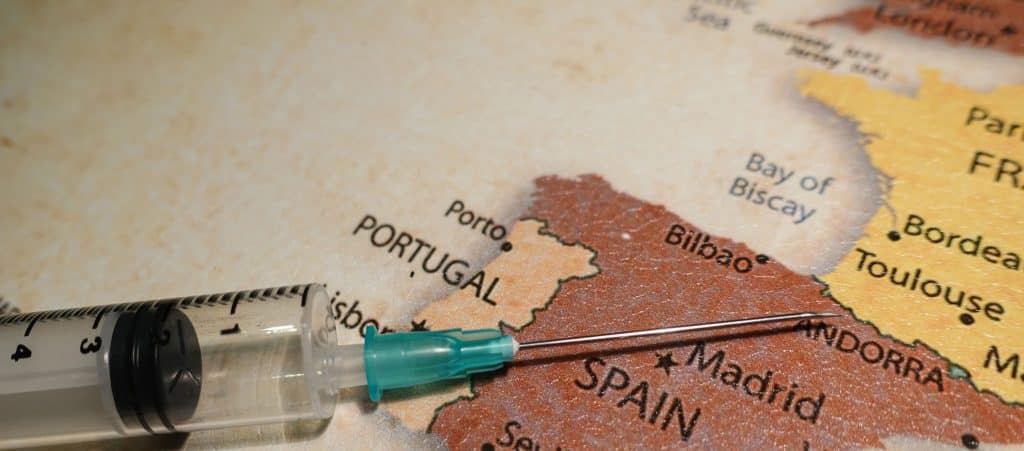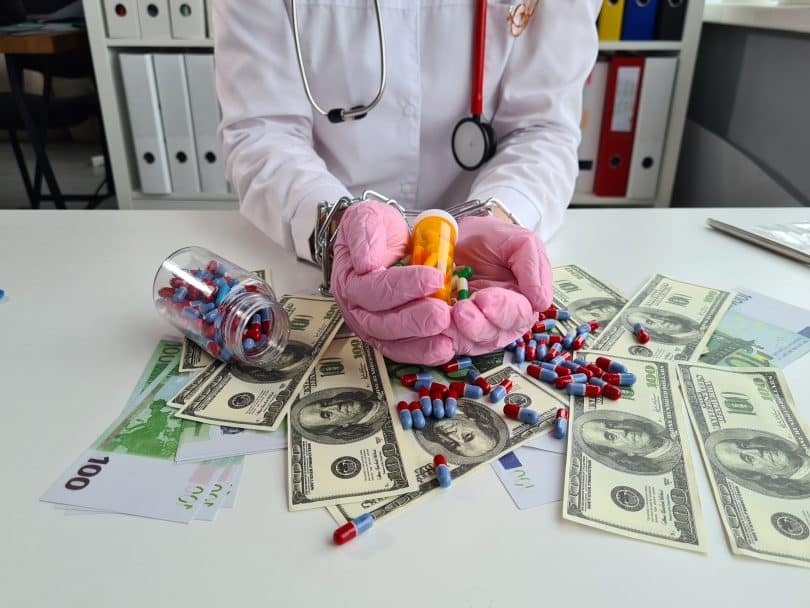Drug issues are constant in society, whether current or historically, but for the most part, the truly bad cases have only accounted for a small percentage of a population. The past decades have introduced a new phenomenon in the issue of drug use, whereby the doctor is the dealer, leading to a whole new level of confusion and difficulty in getting rid of this problem.
When your doctor is your dealer, how do you get off drugs? This is the main issue with today’s opioid crisis. This publication reports on stories in the burgeoning cannabis and psychedelic industries. Stay current by signing up for the THC Weekly Newsletter, and also get yourself some good deals on tons of cannabis products, as well as cannabinoid compounds like HHC-O, Delta 8, Delta 9 THC, Delta-10 THC, THCO, THCV, THCP, and HHC. There are tons of options out there, and we only promote consumers buy products they’re happy with.
The opioid issue
The overdose issue has skyrocketed both in the US, and abroad, and the main contributing factor for these increases is the use of synthetic opioids. Though opiates have been around for awhile (think Tylenol 3), the issue of synthetic opioids is much newer. To clarify, an opiate is a naturally derived compound of the opium plant. An opioid is a synthetically made compound which is either based on opiates, but can’t be found in nature, or a synthetically made version of a naturally occurring compound.
In terms of how deadly they’ve proven to be, the latest preliminary number released by the CDC for 2021 for overdose deaths in America, is 107,622. These are not all opioid overdoses, but account for all drug overdose deaths. This rate is 15% increased from the 93,000 of 2020, which was a 30% increase from 73,000 deaths in 2019.
We don’t know how many of 2021’s deaths are opioid related, but we do know that opioid overdoses account for the grand majority, and we know this by looking at the numbers for other years. Of the 93,000 that died in 2020, over 68,000 were opioid deaths. When looking at 2019 numbers, of the 73,000 overdose deaths, less than 15,000 were heroin, and 48,000 were from synthetic opioids.

Where did this come from?
Opioids came into the spotlight in 1996 when the pharmaceutical company Purdue released oxycontin, the first time release opioid medication, which kicked off tons of issues with patients getting addicted. Issues revolve around the strength of the medication, as well as lies about how long it lasts, which led patients to believe initially that they didn’t need to take as much as what they actually needed in the end.
These safety issues were buried for years, and prescriptions for opioid medications continued to grow. In 2006 8.4 billion opioid pills made it to market, and in 2012, the number was up to 12.6 billion. Consider what it might be now that 10 more years passed. Judging from the growing overdoses, it doesn’t imply the number went down. Between 2006-2012, over 76 billion opioid pills were sold, and three companies manufactured 88% of these: SpecGx, Actavis Pharma, and Par Pharmaceutical. The creator of this epidemic, Purdue, was the fourth largest producer.
These numbers are already old, and that’s because this information is repeatedly buried by both pharma companies and the US government. The US government, for its part, not only continues to allow these medications, but has gone as far as proposing to reduce prescribing guidelines for doctors, making them easier to get. The US government is the sole entity responsible for approving medications, regulating their use, and taking them off the market. So as this issue continues, there is only one entity responsible for its progression.
The problem here is that this isn’t a black market issue, this is a legal medical issue. In this case its not about back-alley deals, it’s about the doctor as the dealer. It was reported that for 2017, 191 million prescriptions for opioids were written in that year, and 45% were written by primary care physician, and not specialists. Primary care physicians are not supposed to write these prescriptions, and perhaps the current situation helps explain why. This massive number of prescriptions amounts to 58.7 per every 100 people.
The sad thing is though big pharmaceutical companies are now paying out billions in lawsuits because of the damage done by these medications, and the lies surrounding them, the doctors writing the prescriptions are not being held liable. Think of how many of those deaths came from patients taking what they were prescribed to take. It’s great that pharma companies must pay out for their crimes, but why aren’t the doctors? If their medical school training is not enough for them to conceptually understand the issue of prescribing addictive medication in large amounts, perhaps we need more stringent requirements for our medical professionals.
Portugal’s decriminalization
In 2001, Portugal shocked the world by creating policy to decriminalize all kinds of drugs. The whole point of the measure wasn’t to promote drug use in the country, but to cut back on the rising HIV cases that were spreading because of IV drug use. It was estimated that half of new yearly AIDS cases came from sharing needles.

The law didn’t legalize drug use or possession, but it did change it from a criminal offense with jail time, to an administrative offense, so long as the user is only caught with a 10-day supply. The main idea is to identify people who require more help, and to get them the help they need. From 2001-2015, Portugal saw a 50% decrease in drug convictions for drug traffickers.
Portugal has seen mainly positive benefits from this move, including a reduction in convictions, a drug-related death rate below the EU average since 2001, and also drug use rates lower than the EU average. This isn’t to say there aren’t issues and ambiguities involved, but it certainly didn’t become a nightmare situation, and does seem to have done some good.
In terms of deaths, since that’s what we’re focused on here, Portugal saw a major drop in overdose deaths for the first several years after the law was enacted. Though they went up again slightly for a few years following, by 2011, deaths were once again down, with a total of only 11 overdose deaths in 2011. The rate does fluctuate, but has never gone as high as 2001 when there were 76 recorded overdose deaths. These numbers, of course, are significantly smaller than the numbers seen in the US.
The doctor is the dealer
The thing is, Portugal was fighting an illicit drug issue. It wasn’t trying to lessen drug use, while having its doctors simultaneously providing them. It was just trying to reduce illicit drugs. The problem with nearly every measure taken in the US (and Canada), from safe use sites, to the decriminalization of hard drugs, which Canada’s British Columbia is about to do, is that these measures are being done while doctors are still prescribing the medications. And as long as the doctor is the dealer, there isn’t a reason for drug use to go down.
In order for that to happen, regulation must surround the ability to get prescriptions, as well as the use of alternate treatments like ketamine. The US was perfectly happy to get rid of Quaaludes, despite claiming the whole country was addicted to them, which would have been horrifying it that was true (it wasn’t). In order to do this, the US went around rooting out producers in the entire world. So why are opioids still around if the US is so willing to get rid of drugs which it claims are bad for its people, but which show no comparable death count?
And why isn’t ketamine in the conversation at all. This non-death-toll dissociative hallucinogen has been associated with acute pain control since the 1960’s, and is the subject of specific studies which show its ability to replace opioids for pain management. Add on that ketamine helps with the circular thinking behaviors of addiction, and one could say its criminal that governments are ignoring it in favor of promoting big pharma and the further proliferation of opioids.

This idea that the doctor is the dealer is a strange one in today’s world of drug addiction, and its not a problem we’ve encountered before. In all other ‘drug wars’, the culprit was always a black market enterprise. But the US (and other countries) isn’t waging wars on doctors and pharmaceutical companies. It’s instead attempting to make opioids easier to get, allowing their continued sale, and practically ignoring all the doctors who function as nothing more than drug pushers.
If the US government likes to prosecute drug dealers, then shouldn’t every doctor that carelessly wrote opioid prescriptions also get prosecuted? We prosecute drunk drivers if they hurt someone else, even if they had no intention to do so. Yet every doctor writing unnecessary prescriptions that lead to death, are just as guilty as any drunk guy who gets behind the wheel and kills another person.
Conclusion
If anyone expects the current tactics now being employed to fight the opioid epidemic to help, then they’re not paying attention. As long as the doctor is the dealer, and the prescriptions keep coming, this problem will never go away, and will only continue to grow.
Welcome to the site! We appreciate you stopping by CBDtesters.co / Cannadelics.com, the premiere internet platform for honest and direct reporting of the cannabis and psychedelics spaces. Join us frequently for daily updates of these dynamic industries, and subscribe to The THC Weekly Newsletter, so you never miss a single thing.









